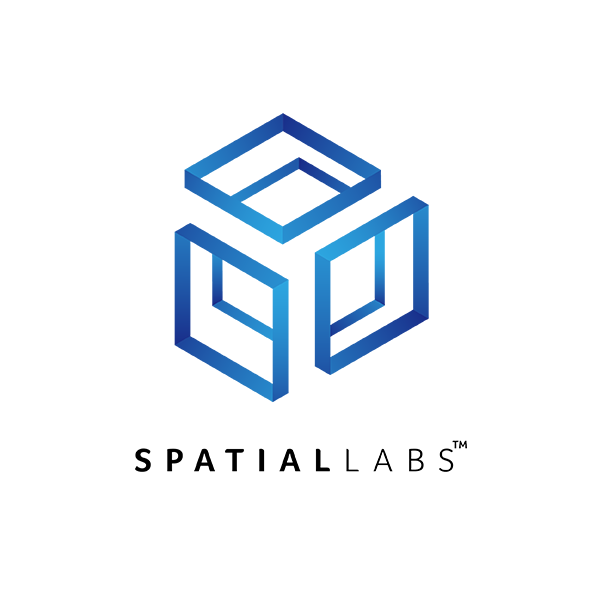
What is GDDR?
Graphics Double Data Rate (GDDR) is a special type of memory designed for high-performance devices like graphics cards, gaming consoles, and advanced computers. Unlike regular memory used in everyday computers, GDDR is built to handle the massive amount of data needed for graphics, making it faster and more efficient.
GDDR stands out because it can quickly transfer large amounts of data, allowing GPUs to process textures, shapes, and lighting for smooth, high-quality visuals. It achieves this with wider connections that move data faster between the GPU and memory. Despite its speed, GDDR is energy-efficient, helping to manage heat and power use. It's also optimized for the kind of multitasking required in gaming, 3D rendering, and AI, making it essential for modern graphical performance.
The importance of GDDR in GPUs cannot be overstated. GPUs rely on GDDR to ensure they have fast and consistent access to the massive amounts of data required to render complex scenes, run high-resolution games, and execute AI-driven computations. Without GDDR, GPUs would struggle to meet the performance demands of modern applications, from immersive gaming to professional creative tasks and cutting-edge AI research.
Evolution of GDDR
GDDR has undergone several iterations, with each generation improving speed, bandwidth, and efficiency:
- GDDR3: Introduced in the early 2000s, GDDR3 was widely adopted in gaming consoles like the Xbox 360 and PlayStation 3, as well as GPUs of the era. It provided a significant improvement in memory bandwidth over its predecessor, DDR2, enabling better performance in gaming and graphical applications. However, its capabilities were eventually outpaced by more advanced generations.
- GDDR5: Released in 2008, GDDR5 became the standard for high-end GPUs, offering substantial improvements in bandwidth and power efficiency compared to GDDR3. It was widely adopted in GPUs for gaming and professional applications, such as NVIDIA's GTX 500 and 600 series, due to its ability to handle increasingly demanding graphical workloads.
- GDDR6: Debuting in 2018, GDDR6 further advanced memory performance by doubling the bandwidth of GDDR5 while maintaining excellent energy efficiency. It became the backbone of modern GPUs, such as NVIDIA's RTX 20 series and AMD's Radeon RX 5000 series, enabling features like real-time ray tracing and supporting higher resolutions in gaming and professional applications.
- GDDR6X: An enhanced version of GDDR6, it introduced PAM-4 signaling (Pulse Amplitude Modulation) to achieve even higher data rates. GDDR6X is capable of transferring more data per clock cycle compared to GDDR6, making it a key choice for NVIDIA’s high-end GPUs, including the RTX 30 series and RTX 40 series.
- GDDR7: The latest generation, offering groundbreaking performance improvements, including higher bandwidth per pin, reduced thermal resistance, and advanced signaling techniques like PAM-3.
What is GDDR7?

GDDR7 (Graphics Double Data Rate 7) is the latest and most advanced generation of GDDR memory, designed to deliver unprecedented performance in high-end GPUs, gaming consoles, and professional computing systems. Announced by Samsung in 2022 and formalized by JEDEC in 2024, GDDR7 represents a significant leap forward over its predecessors, including GDDR6 and GDDR6X, with key innovations in bandwidth, efficiency, and reliability.
Key features and advantages of GDDR7
- Unprecedented Bandwidth and Speed: GDDR7 sets a new benchmark for memory performance, starting with an impressive base speed of 32 GT/s (gigatransfers per second) per pin—60% higher than the fastest GDDR6 and 33% faster than GDDR6X. Future iterations are expected to achieve speeds up to 40 GT/s, with plans for even higher rates in subsequent years. This substantial increase in bandwidth allows GPUs to handle ultra-high resolutions, complex textures, and real-time ray tracing with ease, enabling smoother gameplay and improved visual fidelity.
- Enhanced Efficiency with PAM3 Signaling: One of the most revolutionary features of GDDR7 is its use of PAM3 (Pulse Amplitude Modulation 3-level) signaling, which replaces the NRZ signaling of GDDR6 and the PAM4 of GDDR6X. PAM3 strikes a balance between efficiency and complexity, enabling higher data transfer rates while consuming less power than PAM4. This makes GDDR7 not only faster but also more energy-efficient, a critical factor for modern GPUs operating under stringent thermal constraints.
- Lower Power Consumption: GDDR7 operates at a reduced voltage compared to its predecessors, starting at 1.2V and potentially as low as 1.1V for lower-clocked variants. This reduction in power requirements helps to offset the increased energy demands of higher bandwidth, allowing for better thermal management and more efficient operation in both desktops and laptops.
- Improved Reliability and Error Correction: Another standout feature of GDDR7 is its built-in ECC (Error Correction Code) capabilities. ECC improves data integrity by detecting and correcting minor errors during data transfers, which is essential for maintaining system stability in high-performance applications like gaming, AI, and professional rendering.
- Increased Memory Density: GDDR7 introduces support for non-power-of-two memory configurations, enabling higher memory capacities without increasing physical space requirements. For example, a 128-bit GPU equipped with GDDR7 can now feature 12GB of VRAM instead of the traditional 8GB, providing more headroom for demanding workloads.
How will GDDR7 make the RTX 50-Series better than the RTX 40-Series?

The transition from GDDR6X to GDDR7 is a pivotal factor that elevates NVIDIA's RTX 50-series GPUs above the RTX 40-series. While GDDR6X was a major leap in memory technology, GDDR7 offers even greater advancements in speed, efficiency, and overall performance. Here's how this new technology gives the RTX 50-series an edge:
1. Unmatched Bandwidth for High-Resolution Gaming
The RTX 50-series GPUs leverage GDDR7’s 32 GT/s base speed, which significantly surpasses the 24 GT/s maximum achieved by GDDR6X. This increase in bandwidth allows the RTX 50-series to handle the most demanding gaming scenarios, including 4K and 8K resolutions, with higher frame rates and better stability. Gamers can expect smoother gameplay and more responsive visuals, even with ray tracing and other resource-intensive features enabled.
2. Enhanced Ray Tracing and Neural Rendering
GDDR7’s increased memory speed and bandwidth perfectly complement NVIDIA's Blackwell architecture and DLSS 4 technology. With twice the ray-triangle intersection rate and the introduction of neural shaders in the 50-series GPUs, GDDR7 ensures that these innovations operate at peak efficiency, delivering groundbreaking levels of graphical fidelity. RTX 50-series GPUs can render highly complex scenes faster and more accurately than their 40-series counterparts, providing a more immersive gaming experience.
3. Power Efficiency and Thermal Management
While GDDR6X operates at higher voltages, GDDR7 reduces power consumption with a base operating voltage of 1.2V, making the RTX 50-series GPUs more energy-efficient. This translates to lower thermal output, enabling quieter and cooler GPU operation even under heavy workloads. This improvement is particularly beneficial for gaming laptops in the RTX 50-series, which now boast up to 40% better battery life than previous generations.
4. Larger Memory Capacities
The increased memory density offered by GDDR7 enables the RTX 50-series GPUs to pack more VRAM without increasing the physical size of memory chips. For instance, the RTX 5090 features 32GB of GDDR7 memory, compared to the RTX 4090's 24GB of GDDR6X. This expanded VRAM capacity allows the 50-series GPUs to handle more complex textures, larger datasets, and advanced AI models, making them ideal for creators and researchers working on demanding projects.
5. Improved AI and Generative Workflows
GDDR7 plays a crucial role in accelerating AI-driven applications and generative workflows on the RTX 50-series. With support for FP4 (Floating Point 4) precision processing, which uses less memory while maintaining high accuracy, GDDR7 helps reduce latency and improve throughput in tasks like image generation and AI model inference. Compared to the 40-series, which relies on FP16, the 50-series delivers up to twice the speed in generative AI applications, making it a powerhouse for AI developers and content creators.
6. Future-Proofing
The combination of GDDR7's advanced signaling techniques (PAM3), higher clock speeds, and support for next-generation interfaces like PCIe Gen5 and DisplayPort 2.1 ensures that the RTX 50-series GPUs are ready for future gaming and content creation demands. These enhancements make the 50-series not just a step forward but a long-term investment in cutting-edge technology.
By incorporating GDDR7, the RTX 50-series redefines what’s possible in gaming, AI, and creative workloads. From unmatched performance to groundbreaking efficiency, this new memory technology cements NVIDIA’s 50-series GPUs as the ultimate choice for those who demand the best.
GDDR7's role in the future of graphics technology
As gaming, AI, and professional computing continue to demand higher performance, GDDR7 is poised to become the backbone of next-generation GPUs. Its advanced features and improved efficiency set the stage for innovations in graphical fidelity, interactivity, and computational power. With GDDR7 leading the charge, the future of high-performance computing has never looked more promising.
Recommended Products








